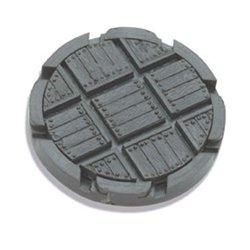The "third rail" refers to an additional rail that provides electrical power to trains, separate from the two rails...
No products
Product successfully added to your shopping cart
There are 0 items in your cart. There is 1 item in your cart.
Search Tips
What is a wagon turntable?
Wagon turntables were similar in principle to full-size ones used to turn locomotives, they were however smaller and performed a different function.
Wagon turntables were as the name suggests only large enough to accommodate wagons (or other rolling stock with a maximum wheelbase of around 12ft). Their function was to direct wagons to appropriate sidings making them more akin in functionality to turnouts than an actual turntable but requiring much less space.
Because wagon turntables had a reduced diameter, converging tracks would inevitably overlap each other before reaching the bridge (plate as it's known on a wagon turntable) so it was not unusual for tracks that serviced wagon turntables to be placed at right angles to each other.
As wagon sizes increased, the turntables became less able to accommodate them and were displaced in many goods yards by the 1960s in favour of more conventional turnouts.
Click here to receive the tips weekly in your mailbox. You can unsubscribe at any time.








